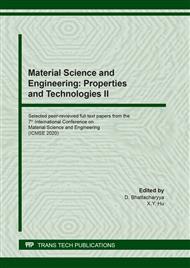p.25
p.33
p.39
p.45
p.51
p.57
p.65
p.71
p.77
Study on Calorimetry of Excess Heat in a d/Pd Gas-Loading System
Abstract:
A heat-flow calorimeter was introduced into the D/Pd gas-loading system to confirm the reliability and accuracy of the results obtained by isothermal calorimetry in the previous work. The effects of input power (electrical current) and pressure on excess heat were discussed under different experimental conditions. The results showed that the heat-flow calorimetry had higher accuracy than isothermal calorimetry. Under deuterium pressure of 30 kPa, the excess heat power decreased with the decrease of the input power, and the maximum excess heat power was (6.40 ± 0.19) W with an input power of 380 W. In the experiments of discussing the relationship between pressure and excess heat, the results showed there was a maximum excess power of (10.28 ± 3.40) W when the deuterium pressure was 220 Pa. The excess heat measured in the system was far more than that in chemical reaction. The results of SEM and EDS implied that excess heat came from nuclear transmutation processes.
Info:
Periodical:
Pages:
51-56
Citation:
Online since:
April 2021
Authors:
Price:
Сopyright:
© 2021 Trans Tech Publications Ltd. All Rights Reserved
Share:
Citation:


